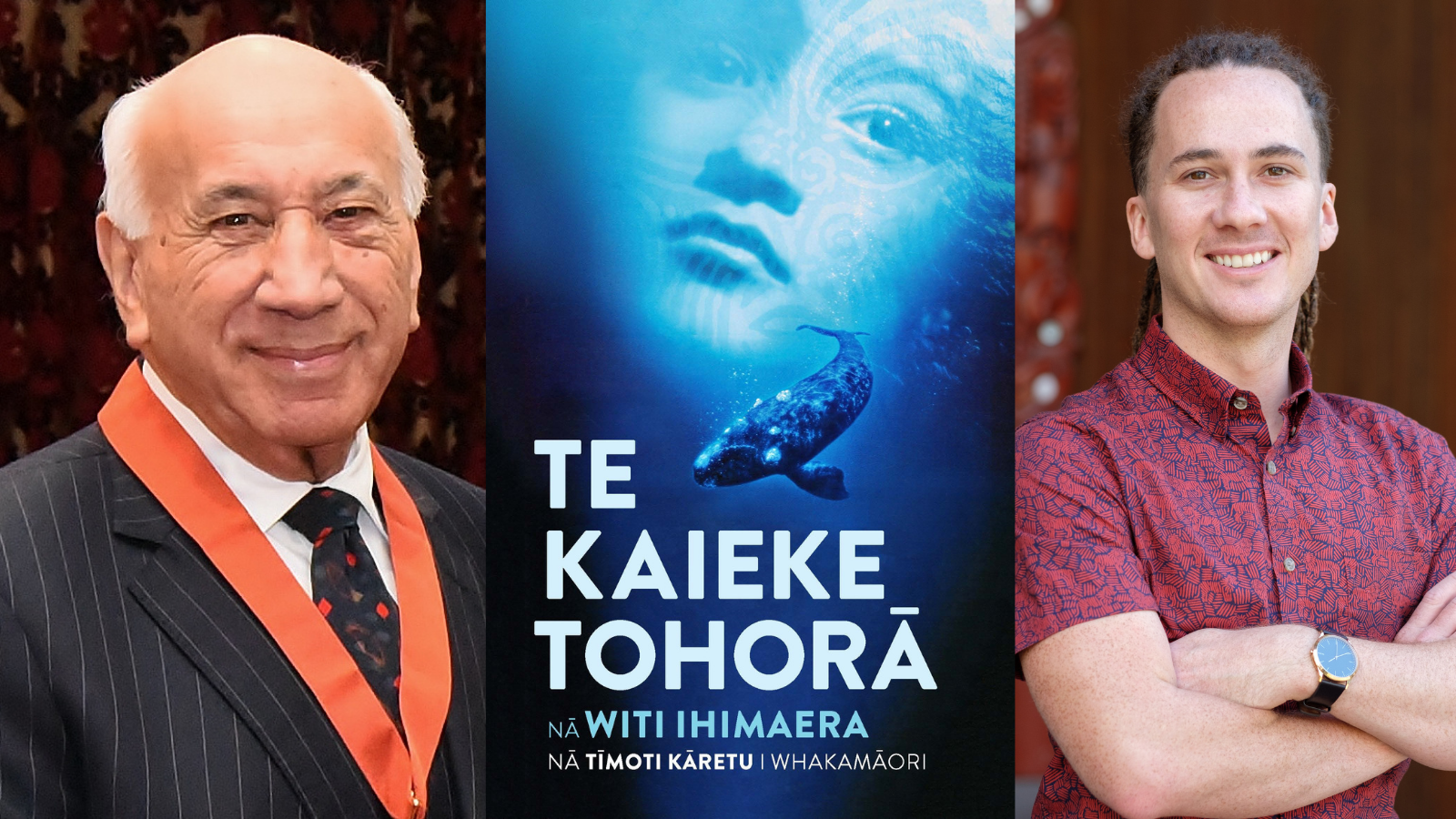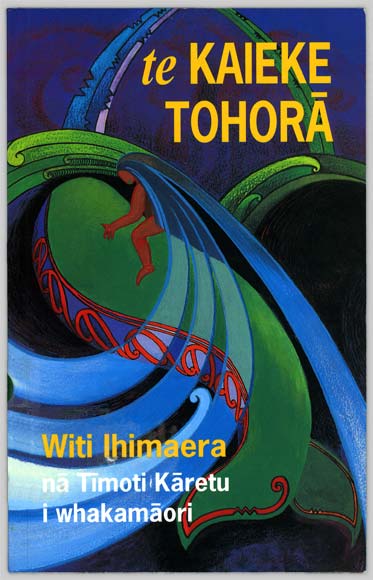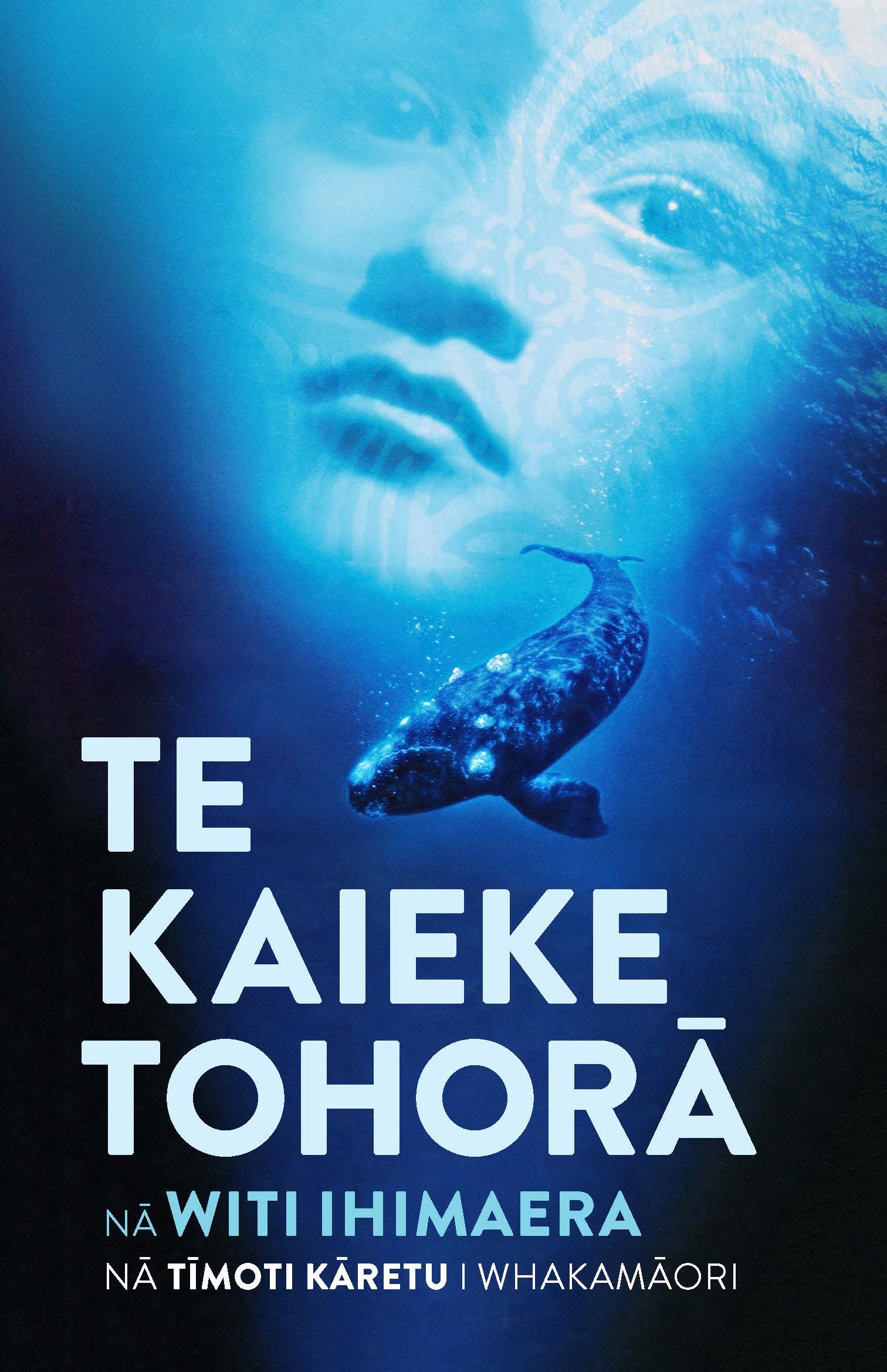In the year 1995, Te Kaieke Tohorā was published—the Māori translation of the book The Whale Rider. We all know that Witi Ihimaera wrote the original, but Sir Tīmoti Kāretu is the man behind the translation. For a long time, Te Kaieke Tohorā was out of print, but this September, the book has been republished, and to mark the occasion, Hēmi Kelly (translator, teacher and author) interviewed Sir Tīmoti. Sir Tīmoti and Hēmi’s original conversation was in te reo Māori—to read the original interview in Māori click here.

Hēmi: Let’s return to 1995. Who commissioned you to do the translation of Whale Rider?
Tā Tīmoti: Ian Watt asked me. At that time, he was in charge of Raupō, and in 1993 he encouraged me to write the book Haka – The Dance of a Noble People. When that was finished, I followed it up with The Whale Rider. He’d contacted Witi, and Witi agreed. .
I told Witi, the language in this book won’t be that of Ngāti Porou, you’ll have to agree to me writing in my own dialect—and Witi agreed, there was no issue. I must acknowledge him for agreeing to have his book translated into Māori by someone from Tūhoe.
I must acknowledge him for agreeing to have his book translated into Māori by someone from Tūhoe.
Was the translation of this book demanding?
At the start of the book, Witi’s writing is very creative. The story goes to the heavens, before finally returning to the land. It was those parts, where the language is very creative, that were more difficult as there were many words I needed to find, to create, and so on.
The good thing was I would call Witi and ask him the meaning of a particular sentence, and he’d give me his explanation—and it was Witi’s explanation that I would run with, not in the words on the page.
And so, only that chapter at the beginning was somewhat hard—besides that, the flow of the story is excellent and the translation was easy.
How long did the translation take?
It really didn’t take that long because I liked the story. I found the translation enjoyable. Witi’s stories are great, he’s a great novelist. The major work was checking the errors at the end, I don’t know how many times we went over it.
The major work was checking the errors at the end, I don’t know how many times we went over it.
It’s good to be working with Pānia Papa in the edition. I must acknowledge Pānia—I’m sure it’s given her a headache, but she’s done a great job with the proofread.
Did you think about the level of the language of of the readers of the book while translating?
No, I maintained the essence of Witi’s writing. One must be somewhat fluent in the language to be able to read this book. I tried it out at a kura reo (full immersion course), and sure enough it was quite difficult.

In your opinion, what is the main goal of the translator when working on a novel like this?
The essence of the authors writing should not be lost because of the translator. It’s difficult at times. It’s hard to avoid expressing your own style in the writing.
The essence of the authors writing should not be lost because of the translator.
No matter how hard you try to suppress your own writing style, your feel, your knowledge of the language and your style of writing appear—nothing can be done about that.
Any advice for contemporary novel translators?
Later on after the book was published, I bumped into Mīria Simpson, who said to me, ‘Tīmoti, your translation is brilliant, but in some parts…’
I replied, ‘Which parts?’
It was the beginning. So I replied, ‘Well, how would you translate it?’
She said to me, ‘I wouldn’t have bothered translating that part. I’d just capture the wider essence of the story.’ Effectively, the kuia was telling me, don’t fixate on the English words.
Perhaps that’s something for translators to consider, just how much they will stick to the original text.
Perhaps that’s something for translators to consider, just how much they will stick to the original text.
It can be challenging; sometimes it isn’t clear in Māori, so one must elaborate or summarise from time to time so that the translation is absolutely clear. The most important thing is that a Māori way of speaking and writing is employed.

Te Kaieke TohorAa
By Witi Ihimaera
Translated by Tīmoti Kāretu
Raupō / Penguin Random House NZ
RRP $26.00

Hemi Kelly
He uri a Hēmi Kelly nō Ngāti Maniapoto me Ngāti Tāhu-Ngāti Whāoa. I tīmata tana whai i te reo Māori nōna e taiohi tonu ana, ināianei kua tū ia hei kaiako reo Māori. Kei Te Wānanga Aronui o Tāmaki Makaurau ia e mahi ana. E pā ana te nuinga o āna mahi ki te whakarauoratanga o te reo Māori me te kaupapa o te whakamāori kōrero.
I te tau 2017, i whakamāoritia e Hēmi tā Witi Ihimaera pukapuka ko Sleeps Standing. Ka whakaputaina tāna ake pukapuka tuatahi ko A Māori Word a Day i te tau 2018, ā, i muri iho i tērā ka puta ko A Māori Phrase a Day. Ka waiho mai ko Te Ruānuku hei pukapuka tuarua kua whakamāoritia nei e Hēmi.



